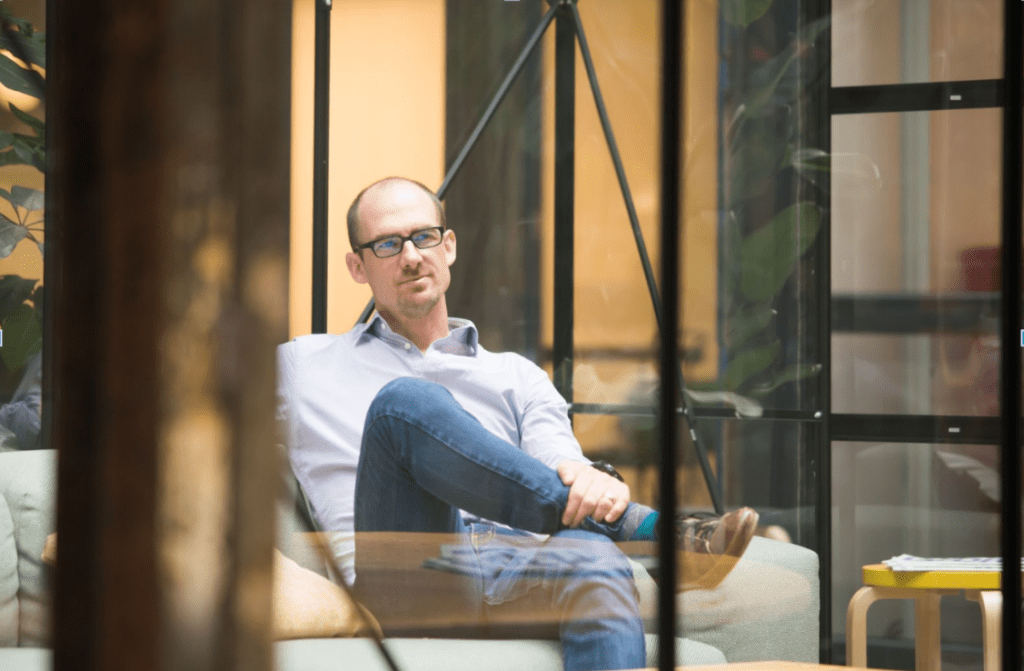
An IE University education clearly proves that a humanistic education can easily be blended with a business one. A recent conversation with Martin Gutmann, an accomplished historian, business professor, and author, affirmed the fact that no one career path is linear. A practicing scholar, professor, and administrator, Gutmann decided in 2015 to pursue an Executive MBA at IE University in order to better teach interdisciplinary topics such as politics and policy to a management audience.
“[An MBA] is such a holistic education, especially at IE. You have this one entity, the organization, at the center and you evaluate it and look at it from every perspective. The financial, the human, the operational, and cultural.”
For all differences between the two areas, Gutmann found a paradoxical but highly sensible blend to both business and academia. In both its purpose and its product, Before the UN Sustainable Development Goals—edited by Gutmann and Daniel Gorman (University of Waterloo, Canada) and featuring contributions from 31 scholars from around the world—addresses a societal need and henceforth provides communal value, as does a successful business idea. There did not exist a collective history on the story behind each SDG prior to Gutmann and Gorman’s book. As a managing director for an executive education program for global policymakers, Gutmann used his acquired business management skills and passion for history in practice.
Martin Gutmann’s Eureka! moment manifested during his work some years ago at an SDG-focused executive education program, with international experts, at ETH Zurich, Switzerland. “But what stood out to me as a historian was the fact that few of the students and few of my fellow faculty members were aware of the very long human history of engaging with these problems [the thematic issues behind the SDGs].” These thematic issues with which we are all familiar, poverty, climate change, urbanization, and water, have accompanied humans for centuries if not millennia. Henceforth, Gutmann set out to recruit a team of global scholars to write the narrative behind each SDG.
The idea of the backstory behind the 17 SDGs is unfamiliar to many; Before the UN Sustainable Development Goals does not fit into any existing categories classifying and defining the SDGs, but rather it established its own one. One piece of wisdom Gutmann hopes his readers will take away from his book is the need to reframe long presumed notions regarding our challenges with sustainable development. As humans, we often place too high of a value on technological advances, especially in connection with climate change. But, in order to be more productive, we must rewire our thought process to better understand the “financial, political, and cultural factors” that affect our use of potentially highly transformative technology.
In the midst of a climate crisis, the SDGs are more widely-talked about than ever. Gutmann noted two historical tendencies that drive the crisis: “an economic system that’s dependent on growth by measuring economic viability and health by GDP” and the “homogenization or westernization of what sustainability looks like.” In the last few hundred years, large masses of tropical forests were transformed into grass and farmland. Gutmann notes that this was not merely a story of deforestation. Through colonization, the few forests that were spared destruction, were made inaccessible to the local population thereby demolished the closed-loop agroforestry systems that existed in parts of South America and Africa. While “big game hunting and safari drives by wealthy, usually white people, were seen as compatible with conservation long-established, sustainable forms of interacting with the forest by local populations were not.” This emphasizes Gutmann’s next point: “we really need to rethink what sustainability looks like.”
A recent resurgence in the term sustainability came from widespread efforts to reframe the idea of sustainable development and conservation. “When societies actively and fundamentally reoriented themselves to address big problems, the pressure to do so on a lot of the ideas often came from the bottom up: civil society groups, working people, and transnational networks.” The sheer power of a movement constituted immense changes in historical contexts, including the abolition of slavery and women’s suffrage. As for the power of the individual, “the individual is immensely important in creating the critical mass.” Despite the current climate crisis, the climate change movement has already moved companies and governments to reorient their practices. The fight continues.
Upon their establishment, the 17 SDGs were intended to be accomplished by 2030. Gutmann believes that although imperfect, the goals remain the best existing standard to measure sustainable development. It should be noted that there exists a multitude of SDG progress trackers, such as the UN’s annual sustainability report. As we approach 2030, there is a demonstrated need for an “absolute renewed effort to implement and finance them.”
The working relationship between businesses and the SDGs is often dictated by the term “corporate social responsibility.” This term entails a need for businesses to implement more sustainable practices designed to promote positive change. Motivated by the SDGs and their target goals, this is but one facet of all that the goals offer to us: “a global community… a shared vocabulary, a shared understanding of what sustainable development means, a shared set of targets, and indicators that give our efforts a bit more coherence. ”
Martin Gutmann and Daniel Gorman’s book, Before the UN Sustainable Development Goals, is available for purchase at Oxford University Press.






